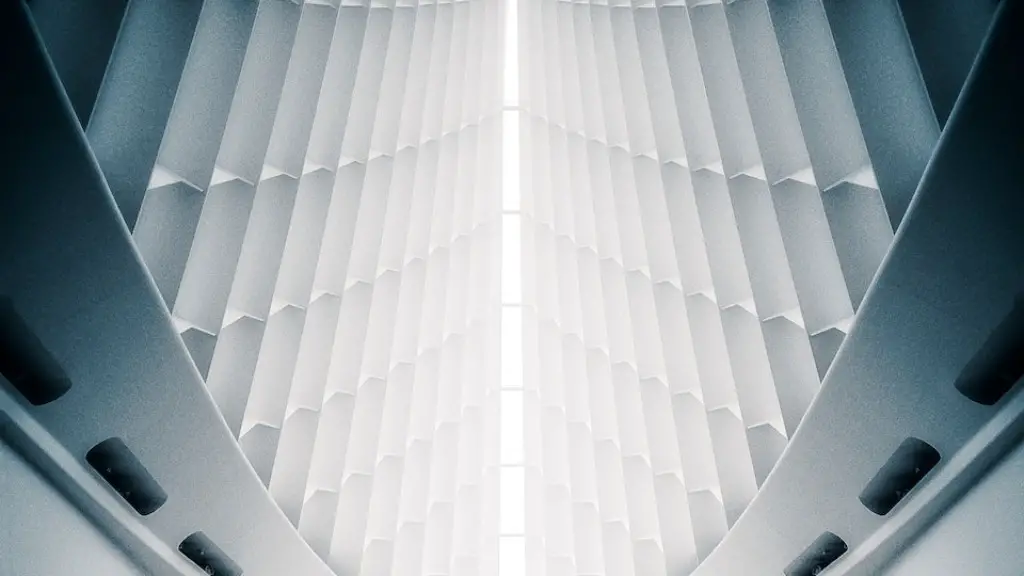Who Said Less Is More In Architecture?
It is said that ‘less is more’ when it comes to architecture, but who was the first person to coin this phrase? This essay seeks to answer this question and explore the concept of minimalism in architectural design.
The term ‘less is more’ was first used by the German-American architect Ludwig Mies van der Rohe in the late 1920s. Mies van der Rohe is considered to be the father of modernism, and he was a pioneer of the minimalist movement in architecture, which he described as ‘less is more’. His work was focused on creating clean lines and open spaces, as well as reducing decoration and avoiding intricate details.
Mies van der Rohe was inspired by both the Dutch De Stijl movement and the Italian Rationalists, both of which sought to create modern designs using minimal elements. He favoured the use of elemental materials such as steel and glass, which allowed him to create structures with maximum transparency and simplicity.
For Mies van der Rohe, minimalism was not just an aesthetic preference; it was also a reflection of his belief in the importance of efficiency and economy. He argued that less is more because when used well, fewer materials can create greater architectural impact. This has been recognised by many architects, and the term ‘less is more’ has become a guideline for many contemporary minimalist designs.
In recent years, there has been a growing trend towards minimalism in architecture, with many architects embracing the philosophy of less is more. This movement has been driven by a desire to create structures that are modern, yet timeless and sustainable. Architects are creating designs that focus on light and airy spaces, as well as an absence of clutter and excess decoration.
Less is more has been embraced by some of the world’s leading architects, including Frank Lloyd Wright and Le Corbusier. Wright argued that simplicity was essential in architecture and that there was no need for ornaments or decorations. Le Corbusier famously declared that ‘a house is a machine for living in’, suggesting that architecture should be functional and efficient.
The minimalist movement has gained popularity in recent years, with many architects now citing it as an influencing factor in their work. It has become increasingly popular among those looking to create modern, sustainable designs that are efficient and timeless.
Why Is Minimalism So Popular In Architecture?
The minimalist movement has been growing in popularity due to its focus on efficient and sustainable design. Minimalism allows architects to create streamlined designs which are cost-effective and easy to maintain over time. This is due to the use of fewer materials, less intricate details and fewer ornaments and decorations, resulting in a simpler and more streamlined aesthetic.
Minimalism is also viewed as a more contemporary design choice, with architects capitalising on the trend for modern, streamlined spaces. It allows them to create clean lines, open spaces, and elegant features which will remain timeless in the long term.
The minimalist style can also be seen as an environmentally-friendly choice. By using fewer materials, architects can reduce their environmental impact, as well as eliminating unnecessary waste. This makes minimalism an attractive option for eco-conscious and sustainability-focused designers.
Finally, minimalism can also be seen as an efficient use of space. By reducing extraneous details, architects can create more space for the necessary elements. This allows them to create more efficient and cost-effective designs which will stand the test of time.
What Are The Benefits Of Minimalism In Architecture?
The minimalist style has numerous advantages for architects and their clients. Minimalism is an efficient design choice which can reduce construction costs and improve the longevity of a structure. Furthermore, it can create modern, timeless designs which will remain relevant in the long term.
Minimalism is also an environmentally-friendly choice. By using fewer materials, architects can reduce their carbon footprint and eliminate unnecessary waste. Designing with fewer materials can also reduce longterm maintenance costs, as there are fewer details that need to be replaced or repaired.
Using minimalism in architecture also enables architects to create efficient and flexible designs which can be easily adapted to changing needs. By removing unnecessary details, architects can create space for more unexpected elements, such as plants, seating, or artwork. This allows them to create unique, innovative designs which are engaging and inviting.
Finally, minimalism can help to create a more unified, harmonious experience. By reducing details, architects can create an uncluttered, open space which will create an inviting atmosphere and a sense of tranquility. This enables them to create spaces which are calming and enjoyable to be in.
What Are The Disadvantages Of Minimalism In Architecture?
Although there are many benefits to minimalism in architecture, there are also some potential drawbacks. Firstly, minimalism can be too stark or cold, which can be off-putting for clients or visitors. Additionally, it can be difficult to make minimalism look attractive; if it is not done correctly, it can look bare or unfinished.
Minimalism can also lack character or feature no defining elements. This can create a dull or uninteresting atmosphere which will be unappealing to potential visitors. Furthermore, if minimalism is used in a space which requires the presence of elements, such as furniture or artwork, then it can end up looking too sparse or uninviting.
Finally, minimalism can be difficult to plan for and construct. It requires architects to reduce unnecessary details, as well as carefully plan for lighting and furniture. Minimalism also requires architects to away from traditional features and ornaments, and instead use subtle, sophisticated elements which may be more difficult to find and install.
What Is The Future Of Minimalism In Architecture?
The minimalist movement is likely to continue to grow in importance in the coming years, as architects and clients embrace the trend for simple, timeless designs. Many leading architects have already adopted the less is more philosophy, and more are likely to follow in the future.
Minimalism is also likely to become more environmentally friendly in the future, with architects focused on reducing their wastage and creating more sustainable designs. Architects will be investing in energy-saving materials, as well as promoting the use of renewable energy sources.
Finally, minimalism is likely to be more focused on flexibility and adaptability in the future. Architects will strive to create designs which can easily be adapted to changing needs and requirements, enabling clients to create space without unnecessary additions.
Conclusion
The minimalist movement in architecture has been growing in popularity in recent years, with many leading architects citing it as an influencing factor in their work. However, minimalism is not without its drawbacks, and architects must carefully consider the advantages and disadvantages before incorporating it into their designs.
Nonetheless, the philosophy of less is more is likely to remain popular in the future, as architects continue to embrace the trend for modern, timeless designs. Architects will also become more focused on creating sustainable designs which make efficient use of materials and energy sources.





